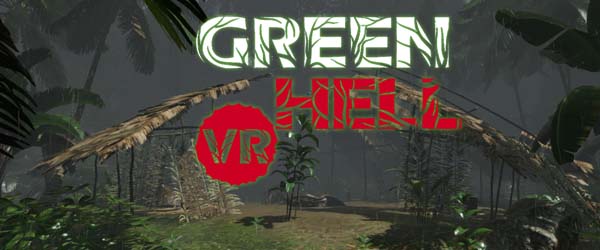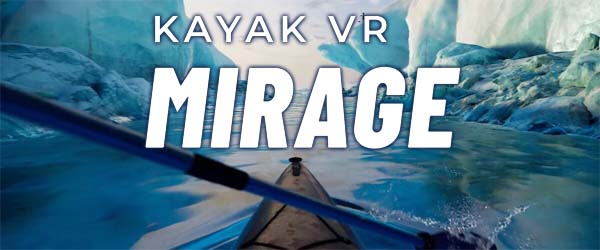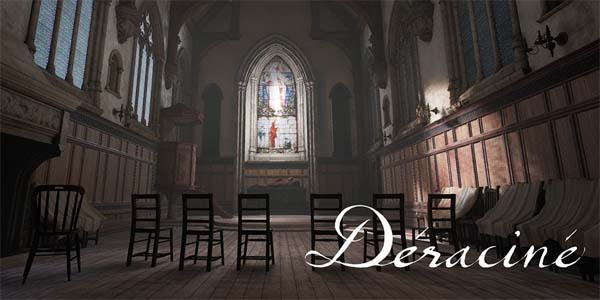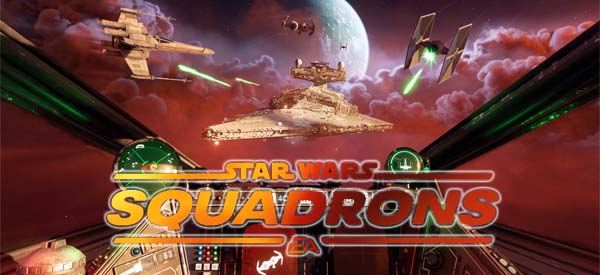
I always have mixed / complicated feelings about survival games. They always seem like a great idea in principle, and I feel like I would really enjoy them for their methodical gameplay oriented around problem-solving (which is one of the reasons I also love classic survival horror games). But when I actually play them, they are often annoying and frustrating, and I have a miserable time trying to learn how the game works.
I think a big part of the problem is that a lot of these games, being modest indie titles, don't have robust tutorials and aren't very good at communicating their gameplay mechanics to the player in an efficient manner. Even when they have tutorials, those tutorials feel like they barely scratch the surface of what the player needs to know. And then you're shoved out into the deep end, having to learn the rules of the game world and the controls for navigating it, while your precious food, water, and energy meters are all depleting. These games are insanely difficult in the early sessions because every new threat or challenge feels like an unfair "gotcha!" from the developers. Once I learn the systems (through lots of frustrating trial-and-error), I find that everything I need is readily available, and most of the fun and challenge of the game gets optimized away, leaving only the tedious chores.
Case in point, figuring out how to save the game in my first couple play sessions with Green Hell VR was a very aggravating experience. I don't recall the game ever telling me that saving requires building certain types of shelters. I assumed the game would autosave every time I slept, and possibly also every in-game day, or every 20 or 30 real-world minutes. So imagine my surprise when I slept, closed the game, and booted it up the next day to find that none of my progress from the previous session had been saved. No, sleeping in just any bed isn't enough to save the game in Green Hell. You need to craft one of 2 or 3 specific shelters, or at a specific landmark.
Saving the game can only be done at dedicated checkpoints, or at a crafted shelter.
Initially, crafting these shelters feels like a relatively daunting task. You need large sticks and palm leaves, both of which are too large and bulky to be stored in your backpack. Scavenging around for them can be time-consuming. They always seem to be everywhere as I'm walking through the jungle, but then nowhere to be found when I try to set up camp. It took me a while to figure out that I could get large sticks by cutting down certain trees, and that palm leaves could be easily cut off of palm trees. I was initially hesitant to use my sharp stones or basic axe to try cutting down these trees because the durability of these tools is so low. So I would wander around looking for loose logs and palm fronds to carry back to camp, all while my health and energy are slowly draining. Logs and leaves were the bane of my existence in the first few play sessions!
I don't have a problem with limiting the ability to save, nor do I have a problem with tying the save functionality to a resource. I've praised Resident Evil for doing those very same things. But Resident Evil at least very clearly explains how saving works, and gives the player an opportunity to save your progress right at the start of the game. The typewriter and an Ink Ribbon are right there in the first room of the game. Green Hell, on the other hand, requires playing through to a particular milestone before you find the first save point, which (depending on how you play) might be hours into the game.
[More]
6f7c7474-ac4b-410e-a7cc-4f2d0c7888d5|0|.0
Tags:Green Hell, Green Hell VR, VR, PSVR2, survival, jungle, Meta Quest 2, protein, carbs, fat, water, fire, animals, mushroom, hunt, crafting, amnesia, medicine, vaccine, anti-vaxxer

When I first saw that there was an NFL-licensed VR game, I assumed it was developed by EA and associated with Madden. After all, EA owns the exclusive rights to NFL-licensed "simulation" football games. I downloaded the playable demo expecting that first-person VR football would be a nauseating disaster of a game. But much to my surprise, the demo was not bad. And doubly-surprising, it isn't developed by EA either. It's developed by StatusPro, inc., which is a company that has made VR training tools for actual athletes, and which is now testing out the waters of VR sports video gaming.
So I guess this is a second loophole to EA's NFL "exclusivity". Not only can other companies make "non-simulation" NFL games, but apparently, VR games are not covered by EA's exclusivity, regardless of whether the VR game could be considered "simulation" or not. NFL ProEra definitely falls into the camp of "simulation" as far as I'm concerned. I mean, what could be more "simulation" than an immersive VR game? Or is it "not simulation" because it lacks a multi-season Franchise mode?
Anyway, the demo was pretty hard. I'm used to reading defenses from a bird's-eye view as both a football spectator and video gamer, so I had a lot of trouble reading the defense from ground-level. I also struggled a bit with aiming my throws. I figured that if the offenses and defenses are using actual football concepts in their A.I., then I should be able to learn to read the defense with enough practice, and the control seemed responsive enough that I hoped I could eventually get used to the throwing motion. So I went ahead and dropped $30 for the full game, curious to see how robust and complete of an NFL experience it would provide.
I was expecting VR football to be a nauseating disaster, but it's surprisingly fun and engaging.
Then I was pleasantly surprised for the second time. I fully expected that the game would just be a collection of short scenarios and mini-games. You know, some "throw the ball through swinging tires" kind of things to practice or warm-up, followed by a short scenario in which I'd have to lead a two-minute drill to win some games. But that isn't the case. After the tutorial, I jumped into an exhibition game to wet my feet, and there was a whole football game there! ProEra even comes packaged with options for quarter length and game clock run-offs (e.g. an "accelerated clock", in Madden parlance). So I could even play a full-length, 15-minute quarter match if I wanted to. And yes, there's training camp mini-games and practice modes too! A couple of those mini-games will even be familiar to long-time Madden veterans.
So yeah, NFL ProEra actually does offer a reasonably complete and robust virtual NFL quarterback experience. But right there, in that sentence, is the first big caveat. You can only play as a quarterback. So if you were hoping to get to live out a VR career as a running back, receiver, or linebacker, you're out of luck -- let alone if you're one of the weirdos who dreams of being a punter, place-kicker, or longsnapper.
Some of the mini-camp drills will be very familiar to older Madden veterans.
[More]

The PSVR2 set for the PlayStation 5 is a pretty neat piece of hardware. I bought one at release, and have been enjoying it a lot. I might even write a review for it after I've finished playing all of the launch titles that I've bought. The PSVR2 has a critical problem though: there aren't very many games for it. There weren't any high-profile AAA games that had VR compatibility except for Gran Turismo 7 and Resident Evil: Village, which were both already a year or 2 old when the PSVR2 released. Horizon: Call of the Mountain was a release title too, but it's more of a stand-alone expansion pack for Forbidden West than a full game.
Since it isn't backwards-compatible with PS4 VR games (even though the PS5 was heavily advertised as being fully backwards-compatible with PS4 games), the PSVR2 doesn't have the benefit of the established PSVR library. Hit titles like Star Wars: Squadrons, Resident Evil VII, or Déraciné sadly aren't playable on the PSVR2 (unless they get PS5 upgrades from the developers, which doesn't seem likely).
There is a silver lining though. This lack of titles may have been bad for the PSVR2 (and its initial sales figures), but it may have been a good thing for some of the smaller titles available on the platform. Those small titles had an opportunity to shine without there being any massive blockbusters to steal the spotlight or players' cash. One such small standout it a little virtual vacation game called Kayak VR: Mirage. After Gran Turismo 7 and Call of the Mountain, Kayak might be the premiere launch title for PSVR2 (even though it is also available on PC VR platforms, and has been for about a year).
The lack of any blockbuster PSVR2 launch titles allowed smaller games to shine in the spotlight.
Virtual vacation, without the sunburn!
Out of the gate, I was very impressed with how this game looks. I'm used to VR titles looking a little grainy and blurry (especially the original PSVR titles I played), but Kayak VR looks sharp as a crystal on the PSVR2! I'm sure it help that the game is only rendering relatively small environments without any people, and it doesn't have to do any complicated A.I. calculations or anything like that. Nevertheless, these exotic locales look absolutely gorgeous. This game is a textbook example of a "virtual vacation", as just sitting, taking a deep breath, and admiring the view is often just as good as the actual game. I can almost smell the salt in the air!
But there is an actual game here, and it's kind of a racing game, I guess? When you're done admiring the views, you can chose to play several races on each of the game's 4 maps. You won't be racing against actual people in real-time, however, as these races are all time-trials against ghosts of other players.
Races are time-trials against ghosts of other players.
Each race requires the player to navigate through a series of gates in a specific order. But these aren't your typical, hovering magic gates that you see in most video games. The gates are physical poles hanging from physical wires strung up throughout the map. If you hit one of the poles with your body, the kayak, or the oar, you'll be docked several seconds from your time as a penalty. These gates are pretty narrow, so completing these races requires some fairly precise handling and control of the kayak. It gets surprisingly difficult.
[More]
4d854981-611a-4aad-83c4-07b0e9f160fd|6|3.0
Tags:Kayak VR: Mirage, Better Than Life, PlayStation 5, VR, PS5, virtual reality, PSVR2, kayak, water, ocean, beach, race, exercise, nature, vacation, Costa Rica, Antarctica, Norway, Australia

I've been enjoying the PS5 and the PSVR2. In fact, I have a sneaking suspicion that when all is said and done, the PS5 might end up being my second favorite console after the PS2. Its novel controller has even rekindled a long-lost love of Gran Turismo. The PSVR2 has been a bit more of a mixed bag. The few games that I've played on it have been good. The set itself is an improvement over the previous hardware in almost every way. It has 1 wire to connect to the console instead of the million cables required to get the original PSVR to connect to the console and TV, and the screen is a lot clearer and more vibrant. The only real downside of the physical hardware is that it is not as comfortable to wear as the original PSVR.
The biggest problem with the PSVR2, however, isn't really a problem with the PSVR2 hardware itself. The problem is the lack of things to play on it. It doesn't really have any killer apps at launch. There's a handful of games that are hardly more than tech demos or glorified expansions for other games. The only full games to be playable in VR at launch were Gran Turismo 7 and Resident Evil: Village, which were already a year or 2 old when the PSVR2 released.
Worst of all, however, is that the PSVR2 does not support any of the original PSVR games for PS4. This is despite the fact that the PS5 was always marketed as being fully backwards compatible with PS4 games. I get that the PSVR2 hardware works under totally different principles compared to the original system (using motion-sensing hardware instead of tracking the headset's position with cameras). But that doesn't mean that Sony couldn't have developed an API to translate the inputs from the PSVR2 into commands that PSVR games could understand. In any case, the net effect is that those of us who bought a PSVR2 are stuck with the hardware's limited library and don't have the luxury of the back-catalog of great PSVR titles. That means no Star Wars: Squadrons, no Resident Evil VII, and no Ace Combat 7, among other PS4 VR games.
The PSVR2 is not backwards-compatible with any of the PS4 VR games.
I actually wasn't aware that the PSVR2 wouldn't support PSVR games when I bought the hardware, and I never owned the original PSVR unit. While I was waiting for the PSVR2 hardware to be delivered, I already bought a fancy new flight stick with the expectation that I would be able to play Star Wars: Squadrons and Ace Combat, and I also bought another PS4 game that I never got around to playing because it was only available for VR. That game was FromSoftware's experimental little VR game, Déraciné. And since the PSVR2 wouldn't play these games on the PS5, I had to ask a friend if I could borrow his original PSVR headset so that I could play them.
[More]
e3b1b07f-8bbd-40f8-a921-27206e6479bf|6|3.0
Tags:Deracine, From Software, PS4, VR, PSVR, virtual reality, point-and-click, children, school, orphan, faerie, cat, time travel, horror

I don't think it will be controversial to say that the best part of EA's 2017 Star Wars Battlefront II was the multiplayer space dogfighting. It made me yearn for a good Star Wars flight sim in the vein of the old X-Wing and TIE Fighter PC classics. But in this age of big-budget, micro-transaction-fueled, multiplayer-focused, spectacle shooters, I wasn't going to hold my breath for EA (the exclusive rights-holder to Star Wars games) to deliver any time soon, especially after a planned remake from LucasArts was canceled back in 2009.
So it came as a surprise to see Star Wars: Squadrons. Yes, it's an online game with a competitive multiplayer focus, so no divergence from modern norms there. But it's also a $40, "middle-shelf" game built on a lower budget than the usual AAA blockbuster that EA produces. That lower budget and pricetag seems to have liberated developer Motive from much of the corporate burden of expectations associated with a larger-scale, more expensive product. Squadrons takes a few risks by raising the expectations and barrier of entry for players, and it doesn't stoop to offsetting its lower pricetag by incorporating a micro-transaction economy (at least not yet).
A flight-sim light
Much like the Ace Combat series, Star Wars: Squadrons hits a good, comfortable middle-ground between an arcade dogfighter and a flight-sim. Squadrons even errs a bit closer to sim in some regards via its power-allocation and sub-system-management mechanics. It is also much more restrictive about the use of special weapons. While Ace Combat allows players to coast along by shooting down almost every enemy plane with your stockpile of 60 or 70 missiles (despite flying a plane that only has between 2 and 6 missles strapped to its undercarriage), Squadrons focuses much more heavily on the use of the fighters' primary laser cannons.
Squadrons locks the player into a cockpit view.
Players are even locked into a cockpit view with limited HUD elements, forcing players to rely on the cockpit instruments. This game makes me wish I had a good PS4-compatible flight stick. The only flight stick I own is an old PC one, which I had to jury-rig to work with Ace Combat 7 on Steam.
No, it isn't as as involved as the classic X-Wing and TIE Fighter PC flight sims, but it's a significant step up from the N64 Rogue Squadron game and its sequel.
Motive has redeemed itself from the awful
single-player campaign of Battlefront II.
A more serious effort
Squadrons shows a lot of signs of learning from the failures of Battlefront II. In fact, I was surprised to find out that Motive was not the studio that developed Battlefront II's space dogfighting. That duty was handled by Criterion Studios. Motive was, in fact, the studio behind Battlefront II awful single-player campaign.
This time, Motive seems to have put some actual thought and effort behind Squadrons' campaign, its story, and its characters. Almost as if this is a project that the studio actually wanted to do, rather than being a project that was imposed upon them by a greedy publisher who just wants a token single-player mode in a game that is actually designed to scam money out of people with pay-to-win online multiplayer. [More]
6b0898a3-e76b-46e8-b3fa-ca9e10854698|1|5.0
Tags:Star Wars, Star Wars: Squadrons, EA, Electronic Arts, dogfighting, cockpit, VR, flight sim, multiplayer, Galactic Empire, New Republic, X-Wing, Y-Wing, A-Wing, U-Wing, TIE Fighter, TIE Bomber, TIE Interceptor, TIE Reaper, Star Destroyer, MC-75, Mon Calamari cruiser, corvette
|

| 12 | | | | | | | 60 | | 11 | | | | | | | 55 | | 10 | | | | | | | 50 | | 09 | | | | | | | 45 | | 08 | | | | | | | 40 | | 07 | | | | | | | 35 | | 06 | | | | | | | 30 | | 05 | | | | | | | 25 | | 04 | | | | | | | 20 | | 03 | | | | | | | 15 | | 02 | | | | | | | 10 | | 01 | | | | | | | 05 |
|